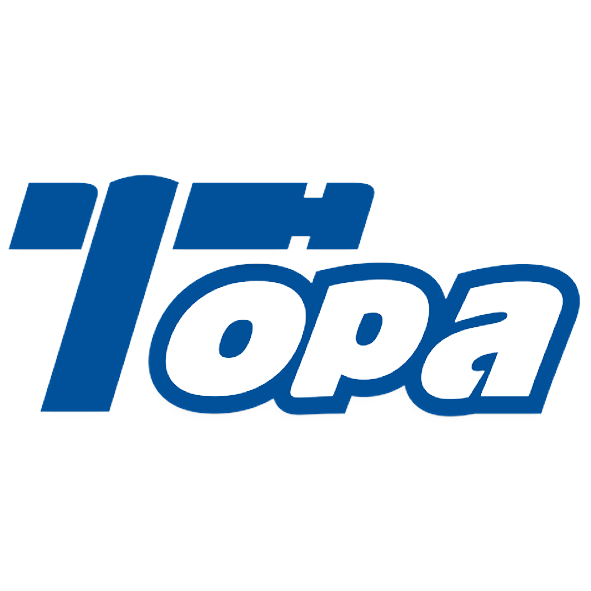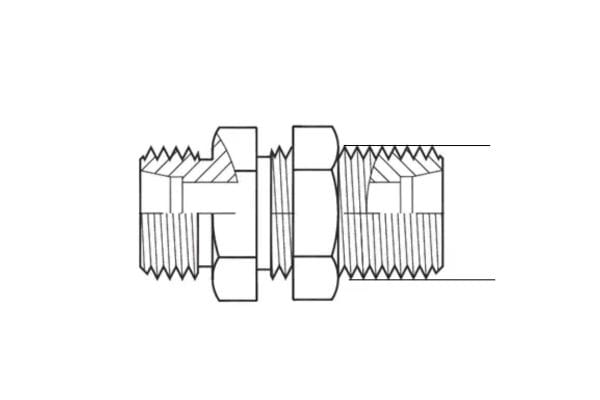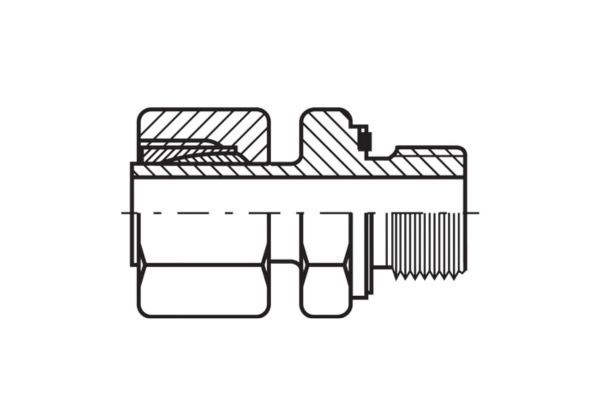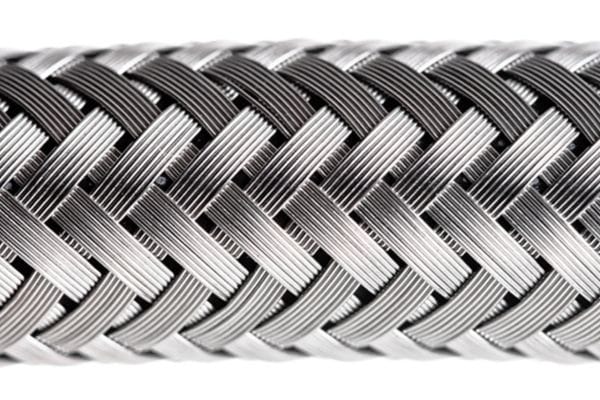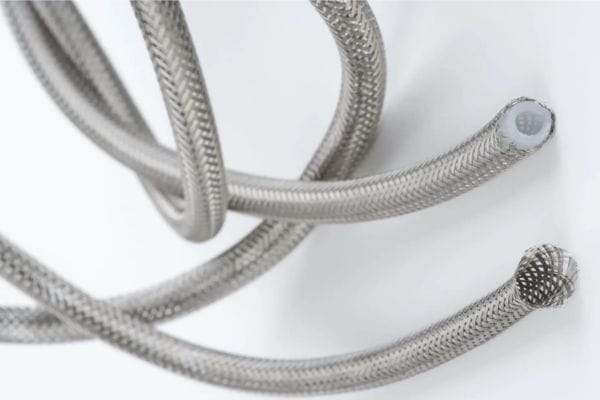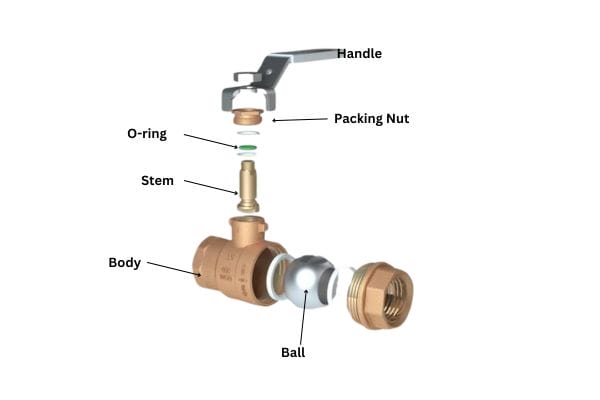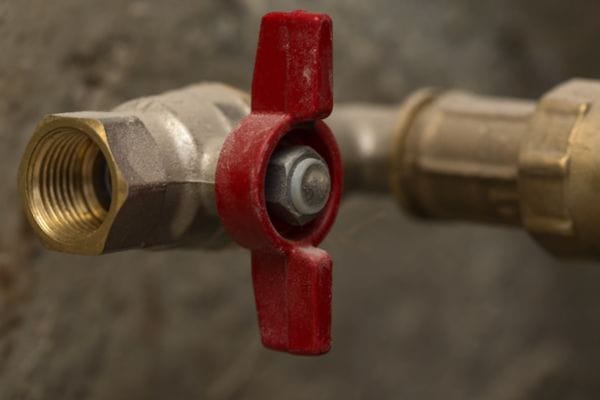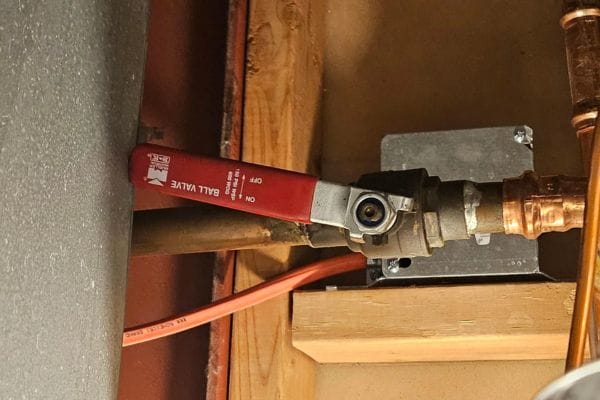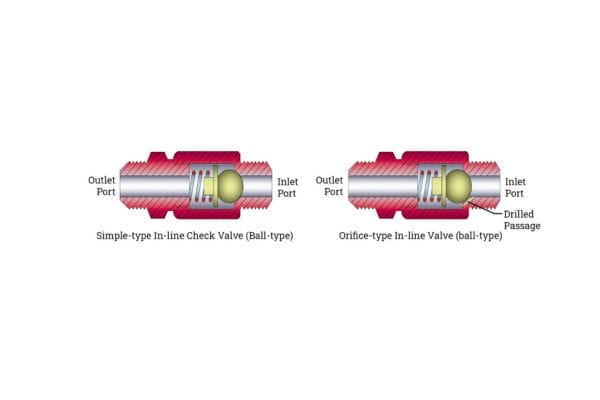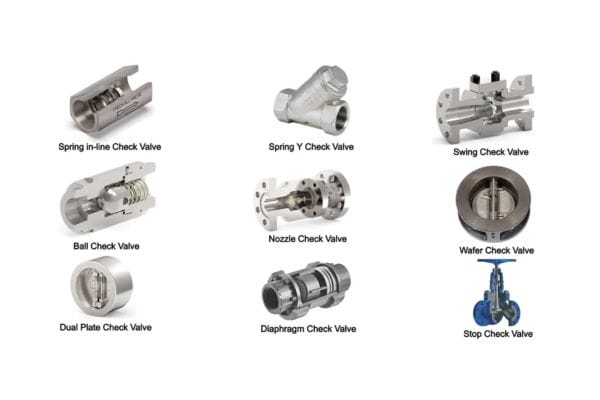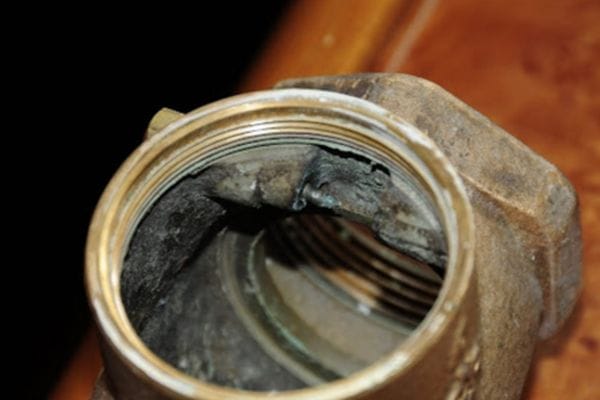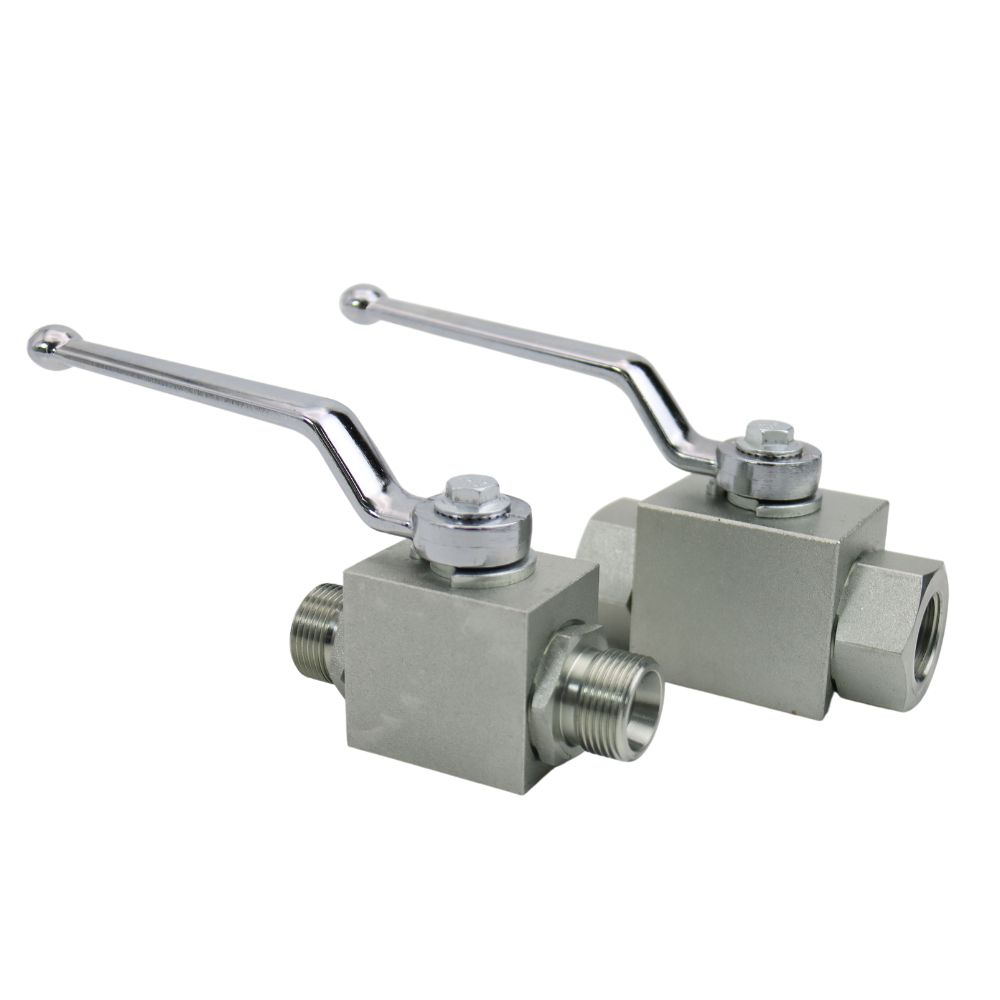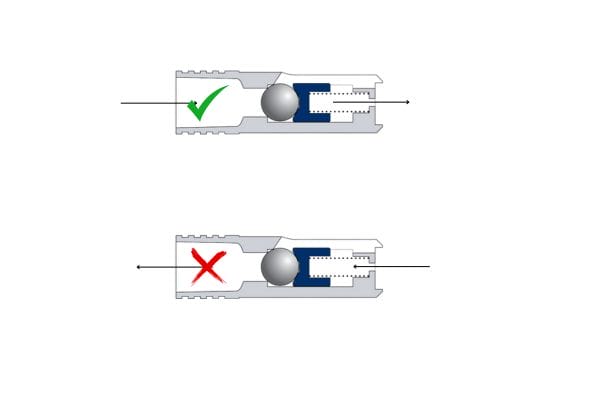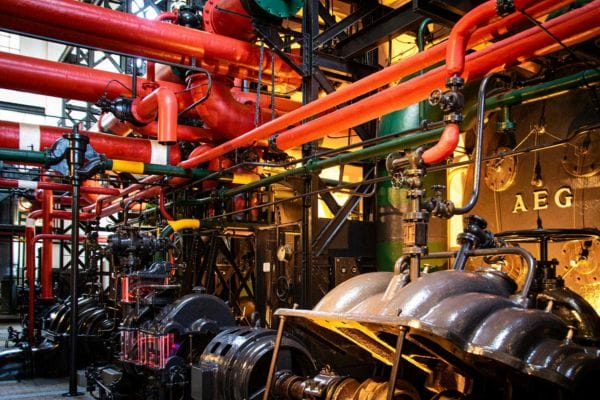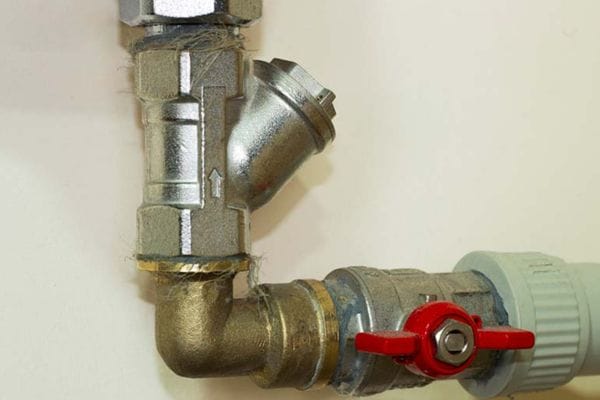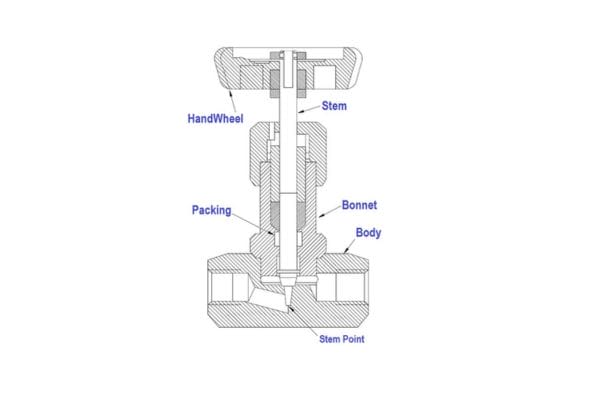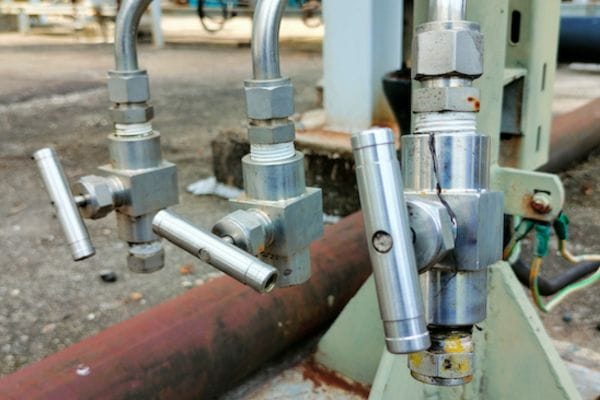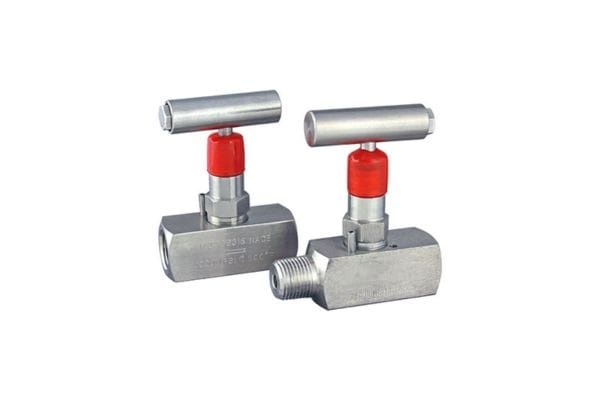British thread reducing adapters play a crucial role in fluid transfer systems, particularly in hydraulic and plumbing applications. These specialized fittings allow for a seamless connection between different pipe sizes and thread types, ensuring a secure and effective seal. They facilitate the transition between components with different thread specifications, thereby preventing leaks and ensuring the efficient operation of hydraulic systems.
Understanding British Threads
British Standard Pipe (BSP) threads are a series of standardized fittings commonly used in plumbing and hydraulic systems. Established to facilitate the interchangeability of components across different manufacturers, BSP threads are characterized by their unique profile and dimensions. The primary goal of BSP threading is to ensure a reliable and leak-proof connection, essential for maintaining fluid integrity in various applications.
Definition of British Standard Pipe (BSP) Threads
BSP threads can be classified into two main categories: parallel (BSPP) and tapered (BSPT). BSPP threads are designed with a constant diameter along their length, providing a straight fit that relies on an additional sealing mechanism, such as a washer or O-ring, for leak prevention. In contrast, BSPT threads feature a tapered profile that compresses as the fitting is tightened, creating a seal without requiring additional sealing materials. This fundamental difference affects their application in various systems, making it critical for professionals to understand which type is suitable for specific needs.

Types of British Threads: BSPP vs BSPT
BSPP (British Standard Parallel):
Characteristics: BSPP threads maintain a consistent diameter and have a flat sealing surface. They typically use an O-ring or washer for sealing, which allows for greater flexibility in alignment during installation.
Applications: Commonly found in applications where the components are not subject to high-pressure fluctuations, BSPP threads are prevalent in water and gas distribution systems, as well as in low-pressure hydraulic systems.
BSPT (British Standard Taper):
Characteristics: BSPT threads taper along their length, leading to a tighter fit as they are tightened. The 55-degree thread angle, combined with the taper, allows for an effective mechanical seal.
Applications: Ideal for high-pressure applications, BSPT threads are often used in hydraulic systems and gas connections, where leak prevention is paramount.
Understanding the differences between BSPP and BSPT is essential for selecting the right fitting for a given application, as improper usage can lead to leaks, pressure drops, and potential system failures.
Key Specifications and Standards (ISO, ANSI)
BSP threads are governed by several standards that ensure consistency and compatibility across various industries. The most notable include:
ISO Standards: The International Organization for Standardization (ISO) has established standards for BSP threads, specifically ISO 228 for parallel threads (BSPP) and ISO 7 for tapered threads (BSPT). These standards define the dimensions, tolerances, and performance requirements for fittings, ensuring they meet international quality benchmarks.
ANSI Standards: The American National Standards Institute (ANSI) also recognizes BSP threads, providing guidelines that align with ISO standards. ANSI B1.20.3 pertains to the tapered pipe threads, ensuring compatibility with NPT (National Pipe Taper) threads, which are commonly used in North America.
The adoption of these standards facilitates the global trade of components and helps prevent installation issues arising from dimensional discrepancies. By adhering to these specifications, manufacturers can produce fittings that are interchangeable and reliable, significantly enhancing the efficiency and safety of hydraulic and plumbing systems.
What are British Thread Reducing Adapters?
British thread reducing adapters are specialized fittings designed to connect pipes or components with different thread sizes, specifically within the context of British Standard Pipe (BSP) threads. Their primary purpose is to facilitate the transition between varying diameters and thread types, allowing for the seamless integration of different systems. This adaptability is crucial in ensuring the efficient operation of hydraulic and plumbing applications, where compatibility between components is essential for preventing leaks and maintaining system integrity.
Definition and Purpose of Reducing Adapters
A British Thread Reducing Adapter serves as a connector that allows for the joining of a larger diameter pipe or fitting to a smaller one, effectively reducing the thread size. This functionality is particularly important in hydraulic systems where components may not always match in size due to design variations, modifications, or upgrades. By using a reducing adapter, engineers and technicians can ensure that systems operate smoothly without the need for complete replacement of existing components, thereby saving time and reducing costs.
These adapters are commonly utilized in various settings, including industrial machinery, automotive applications, and construction projects. Their design enables the user to maintain the integrity of the overall system while accommodating different pipe sizes, ensuring efficient fluid transfer and reducing the risk of leaks.

How They Function in Various Applications
British thread reducing adapters function by providing a secure and reliable connection between dissimilar pipe sizes. When installed, the adapter allows fluid to flow from the larger pipe to the smaller pipe without any interruption.
Hydraulic Systems: In hydraulic applications, where pressure and fluid dynamics are critical, these adapters play a vital role in connecting hoses and fittings of differing sizes. They ensure that the system maintains the required pressure while facilitating efficient fluid transfer.
Water and Gas Distribution: In plumbing applications, reducing adapters helps connect various pipe sizes in water and gas distribution networks. This adaptability is essential for accommodating changes in system requirements, such as upgrading pipe sizes or modifying layouts.
Industrial Equipment: Reducing adapters are also prevalent in industrial settings where machinery may have been retrofitted or modified. They allow for easy integration of new components without the need for extensive redesign, making maintenance and upgrades more straightforward.
Automotive Applications: In the automotive industry, these adapters are used to connect different size hoses and fittings, particularly in cooling systems, fuel lines, and hydraulic systems, ensuring optimal performance and safety.
Common Materials Used in Manufacturing
The materials used to manufacture British thread reducing adapters are critical to their performance and longevity. Common materials include:
Brass: Known for its excellent corrosion resistance and machinability, brass is a popular choice for reducing adapters in plumbing and hydraulic applications. Its durability and ability to withstand varying temperatures make it suitable for both water and gas applications.
Stainless Steel: For applications requiring higher strength and resistance to corrosion, stainless steel is often preferred. It is particularly useful in harsh environments, such as those found in industrial or marine applications. Stainless steel adapters provide a longer lifespan and enhanced reliability.
Carbon Steel: Used in applications where cost-effectiveness is a priority, carbon steel is suitable for low to moderate pressure applications. While it is less resistant to corrosion than stainless steel or brass, it is often coated or treated to enhance its durability.
Plastic: In some lower-pressure applications, plastic reducing adapters are used for their lightweight and corrosion-resistant properties. These are typically found in residential plumbing systems or non-critical applications.
Benefits of Using British Thread Reducing Adapters
British thread reducers offer numerous advantages that make them essential components in various hydraulic and plumbing systems. Their design facilitates seamless integration and optimal performance, addressing the challenges posed by differing pipe sizes and thread types. This section explores the key benefits of using these adapters, focusing on their compatibility with existing systems, improved sealing and leakage prevention, and versatility across multiple industries.
Compatibility with Existing Systems
One of the primary advantages of British thread reducing adapters is their ability to ensure compatibility with existing systems. In many applications, especially in industrial and construction settings, upgrading or modifying equipment often involves connecting new components to older systems. Reducing adapters allow for this integration without requiring complete overhauls of the existing infrastructure.
Seamless Integration: By bridging the gap between different thread sizes, these adapters enable technicians to maintain operational continuity while accommodating new components. This is particularly valuable in systems where downtime is costly or impractical.
Cost-Effective Solutions: Instead of replacing entire sections of pipework or investing in custom fittings, using reducing adapters can significantly reduce costs. They allow for effective modifications without the financial burden associated with complete system replacements.
Ease of Installation: Most British reducing adapters are designed for straightforward installation, making them user-friendly for technicians. This ease of use enhances efficiency and minimizes labor costs during maintenance or upgrades.
Improved Sealing and Reduced Leakage
Another significant benefit of British thread reducing adapters is their ability to improve sealing and reduce the risk of leakage. Ensuring a secure connection is crucial in any fluid transfer system, and these adapters are designed to excel in this area.
Tapered Design for Enhanced Sealing: Many reducing adapters utilize a tapered design (BSPT), which compresses upon tightening to create a mechanical seal. This feature helps prevent leaks, especially in high-pressure applications where fluid integrity is vital.
Compatibility with Sealing Materials: British thread reducing adapters can be used with various sealing materials, such as PTFE tape or thread sealants. This flexibility allows for enhanced leak prevention, accommodating different application requirements.
Durability and Reliability: Manufactured from high-quality materials like brass or stainless steel, these adapters are resistant to corrosion and wear. This durability contributes to long-lasting seals, reducing the likelihood of leaks over time.
Pressure Retention: In hydraulic systems, maintaining pressure is essential for optimal performance. Reducing adapters facilitate this by providing tight connections that minimize pressure drops and maintain system efficiency.
Versatility Across Different Industries
British thread reducing adapters demonstrate remarkable versatility, making them suitable for a wide range of applications across various industries.
Hydraulic Systems: In the hydraulic sector, these adapters are indispensable for connecting different-sized hoses and fittings. Their ability to handle high-pressure environments while maintaining leak-proof connections is critical for machinery performance.
Plumbing Applications: In residential and commercial plumbing, reducing adapters are commonly used to connect pipes of varying sizes. They provide a reliable solution for water distribution systems, ensuring effective flow management and preventing leaks.
Automotive Industry: The automotive sector benefits from these adapters for connecting fuel lines, cooling systems, and hydraulic components. Their robust construction ensures reliable performance in the demanding environments found in vehicles.
Industrial Equipment: Many manufacturing processes require precise fluid transfer, making Britishreducing adapters a popular choice in industrial machinery. They facilitate quick adjustments and modifications, enhancing production efficiency.
Agriculture and Irrigation: In agricultural applications, these adapters are used in irrigation systems to connect different pipe sizes, ensuring consistent water flow and efficient resource management.
Identifying British Thread Types
Identifying British thread types, specifically BSPP (British Standard Parallel) and BSPT (British Standard Taper), is crucial for ensuring compatibility in hydraulic and plumbing systems. Accurate identification prevents improper fittings and potential leaks.
Visual Guide to Recognizing BSPP and BSPT Threads
BSPP (British Standard Parallel) Threads:
Profile: BSPP threads have a straight, uniform diameter along their length. The threads appear consistent and do not taper toward the end.
End Type: Typically features a flat or smooth sealing surface, which may require a washer or O-ring to achieve a leak-proof connection.
Visual Characteristics: The 55-degree thread angle is standard, and the threads are generally finer than those of BSPT. An adapter or fitting with a parallel thread will maintain the same diameter throughout.
BSPT (British Standard Taper) Threads:
Profile: BSPT threads taper, meaning the diameter decreases along the length of the fitting. This design allows for a tighter fit when installed.
End Type: Often ends in a pointed tip, facilitating a direct connection to a corresponding tapered fitting.
Visual Characteristics: Like BSPP, BSPT threads also have a 55-degree thread angle. However, their taper means they will become narrower towards the end, creating a mechanical seal as they are tightened.

Tools and Techniques for Measurement
Accurate measurement is vital for the proper identification of BSPP and BSPT threads. Here are some essential tools and techniques:
Thread Pitch Gauge:
This tool measures the distance between the threads. By determining the pitch, you can distinguish between different thread types. For BSP threads, the pitch is typically measured in threads per inch (TPI) or millimeters.
Caliper:
A caliper allows for precise measurement of the external diameter of the fitting. Knowing whether the diameter is consistent (BSPP) or tapering (BSPT) will help in identification.
Angle Finder:
To confirm the thread angle, an angle finder can be used. BSP threads are characterized by a 55-degree angle, distinguishing them from other thread types, such as NPT (National Pipe Taper), which typically has a 60-degree angle.
Visual Comparison:
Whenever possible, visually compare the thread type with known examples or charts. This can be helpful in quickly confirming whether the threads are BSPP or BSPT.
Common Mistakes to Avoid in Identification
Identifying British threads can be tricky, and several common mistakes can lead to errors. Here are key pitfalls to avoid:
Confusing BSP with NPT:
A frequent error is mistaking BSP threads for NPT threads. While both are tapered, BSP has a 55-degree angle compared to NPT’s 60-degree angle. Always check the angle to avoid misidentification.
Ignoring Sealing Mechanisms:
Failing to consider the sealing mechanism can lead to misidentification. BSPP fittings often require an O-ring or washer, whereas BSPT fittings create their seal through compression. This difference can sometimes lead to confusion.
Neglecting Thread Pitch:
Some may overlook measuring the thread pitch, which is crucial for accurate identification. Always measure and compare the pitch to ensure proper fitting selection.
Relying Solely on Visual Inspection:
While visual characteristics can provide clues, they should not be the sole method for identification. Always use measurement tools to confirm thread type.
Overlooking Manufacturer Specifications:
Not consulting manufacturer specifications or documentation can lead to errors, especially when dealing with custom fittings or less common variations of BSP threads. Always refer to reliable sources when in doubt.
Installation and Maintenance Tips
Step-by-Step Guide to Installing British Thread Reducing Adapters
Preparation:
Inspect Components: Before installation, thoroughly inspect the reducing adapter and the connecting pipes for any damage or wear. Ensure that the threads are clean and free from debris or corrosion.
Gather Tools: Have the necessary tools ready, including a wrench, thread sealant or PTFE tape (for BSPT if applicable), and any alignment tools.
Clean the Threads:
Use a wire brush or cloth to clean the threads of both the reducing adapter and the pipe. Removing old sealant and debris ensures a better fit and seal.
Apply Thread Sealant:
For BSPT threads, apply PTFE tape or appropriate thread sealant to the male threads of the fitting. Wrap the tape in the direction of the thread to avoid unraveling during installation.
Align the Components:
Carefully align the reducing adapter with the corresponding pipe or fitting. Ensure that the threads are engaged straight to prevent cross-threading.
Hand Tighten:
Start by hand-tightening the adapter to ensure proper alignment. This initial step helps to confirm that the threads are properly engaged without any misalignment.
Use a Wrench:
Once hand-tightened, use a wrench to tighten the connection further. Avoid overtightening, which can damage the threads or lead to deformation. Generally, a firm snug fit is sufficient.
Check for Leaks:
After installation, it is important to test for leaks. Gradually apply pressure to the system, monitoring the connection for any signs of leakage. If leaks are detected, consider retightening or reapplying the sealant.
Best Practices for Ensuring a Secure Fit
Proper Alignment:
Always ensure that the components are aligned correctly before tightening. Misalignment can lead to cross-threading or uneven pressure, increasing the risk of leaks.
Use the Right Tools:
Utilize appropriate tools for tightening connections, such as adjustable wrenches or socket wrenches. Using the correct tools minimizes the risk of damaging the fittings.
Do Not Over-Tighten:
Applying excessive force can strip threads or damage the adapter, compromising the seal. Follow manufacturer guidelines for torque specifications when available.
Regular Inspections:
Periodically check installed adapters for signs of wear, corrosion, or leaks. Early detection of issues can prevent more significant problems down the line.
Use Compatible Materials:
Ensure that the materials of the reducing adapter are compatible with the fluids being transferred. This compatibility helps prevent corrosion and extends the lifespan of the components.
Maintenance Tips to Prolong Lifespan and Performance
Routine Cleaning:
Regularly clean the external surfaces of the reducing adapter and connected pipes to remove dirt and debris. This practice prevents buildup that could affect performance.
Inspect for Damage:
During routine maintenance checks, inspect the threads and sealing surfaces for signs of wear, cracking, or corrosion. Replace any damaged components promptly to maintain system integrity.
Monitor Operating Conditions:
Keep an eye on the pressure and temperature conditions of the system. Excessive pressure or temperature fluctuations can lead to premature failure of fittings.
Retighten Connections:
Periodically retighten connections as part of routine maintenance, especially in high-pressure systems. Vibrations and thermal expansion can lead to loosening over time.
Replace Sealant When Necessary:
If leaks are detected, replace the thread sealant or PTFE tape. Ensure that the threads are cleaned before reapplying new sealant to ensure an effective seal.
Conclusion
Choosing the right British thread reducing adapters is not merely a matter of convenience; it is essential for the safety and efficiency of any hydraulic or plumbing system. The wrong adapter can lead to leaks, pressure loss, and system failure, ultimately resulting in costly repairs and downtime. By understanding the specifics of these adapters, professionals can make informed choices that enhance their systems’ reliability.
FAQ
What are British thread reducing adapters?
They are fittings that connect pipes or components with different thread sizes, specifically BSPP and BSPT, facilitating seamless transitions in hydraulic and plumbing systems.
How can I identify BSPP and BSPT threads?
BSPP threads are parallel with a consistent diameter and a flat sealing surface, while BSPT threads taper towards the end. Use a thread pitch gauge and caliper for accurate measurement.
What materials are commonly used for manufacturing these adapters?
Common materials include brass, stainless steel, carbon steel, and plastic, each chosen based on the specific application requirements and environmental conditions.
What are the benefits of using British Thread Reducing Adapters?
They provide compatibility with existing systems, improve sealing to reduce leaks, and offer versatility across various industries, including hydraulics, plumbing, and automotive.
Can I use British Thread Reducing Adapters with American fittings?
Care should be taken, as British and American threads have different specifications. It’s crucial to ensure compatibility and avoid mixing thread types like BSP with NPT.
How do I install a British thread adapter?
Clean the threads, apply appropriate sealing materials, hand-tighten the adapter, and then use a wrench for a secure fit. Always follow the manufacturer’s guidelines for best practices.
